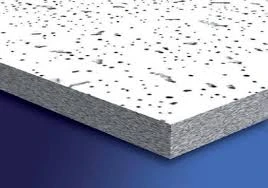Dec . 09, 2024 21:00 Back to list
Innovative Designs for Perforated Metal Grid Ceilings in Contemporary Architecture
The Versatility and Benefits of Perforated Metal Grid Ceilings
In contemporary architecture and interior design, the choice of ceiling materials plays a crucial role in shaping the aesthetic and functional aspects of a space. One innovative solution that has gained significant popularity is the perforated metal grid ceiling. This unique ceiling design not only enhances the visual appeal of interiors but also offers a range of practical benefits that make it a preferred choice for various environments.
Understanding Perforated Metal Grid Ceilings
Perforated metal grid ceilings are comprised of metal panels featuring numerous holes or perforations arranged in specific patterns. These ceilings often use lightweight aluminum, steel, or other metal alloys to form a grid system that can be suspended from the structural ceiling above. The perforations can vary in size, shape, and layout, allowing designers to create customized aesthetics while adhering to functional requirements.
Aesthetic Appeal
The sheer versatility of perforated metal allows for innovative design possibilities and creative applications. With the ability to be finished in various colors and textures, these ceilings can complement any commercial or residential décor. The perforations can create unique lighting effects, with light filtering through the holes to cast intriguing shadows and patterns on the surfaces below. This feature is particularly appealing in spaces where ambiance is critical, such as restaurants, galleries, and office environments.
Acoustic Performance
One of the standout benefits of a perforated metal grid ceiling is its acoustic performance. Sound absorption is a key consideration in many public and private spaces, particularly in areas with high noise levels. The holes in perforated metal can help reduce echo and reverberation, improving overall sound quality. Many systems are designed with acoustic backing materials that further enhance sound absorption, creating quieter environments suitable for work or leisure activities. This makes perforated metal grid ceilings an excellent choice for auditoriums, conference rooms, and open office spaces.
perforated metal grid ceiling

Enhanced Air Flow
Another significant advantage of perforated metal grid ceilings is their ability to facilitate air circulation. As modern buildings increasingly prioritize energy efficiency and indoor air quality, having a ceiling that allows air flow can contribute to a healthier environment. The perforations in the metal panels can help with the distribution of heating and cooling from HVAC systems, ensuring that conditioned air reaches all areas of a room effectively. This feature can lead to improved thermal comfort and reduced energy costs—benefits that are appealing to both building owners and occupants.
Durability and Maintenance
Durability is a primary concern when selecting ceiling materials, particularly in high-traffic or industrial environments. Perforated metal grid ceilings are known for their robustness and longevity. Metal materials are resistant to wear and tear, and they often withstand moisture, pests, and fading better than traditional ceiling options, such as tiles or fabric. In addition, the maintenance of these ceilings is relatively straightforward. A simple routine of dusting and periodic cleaning is usually sufficient to maintain their appearance, making them a low-maintenance choice for busy environments.
Sustainability
As sustainability continues to be a significant focus in construction and design, perforated metal grid ceilings stack up well against environmental considerations. Metal can be recycled indefinitely without losing quality. Opting for metal ceilings—especially those made from recycled materials—can contribute to a building’s overall sustainability profile. This environmental responsibility resonates particularly well with modern consumers and businesses looking to reduce their ecological footprint.
Conclusion
Perforated metal grid ceilings offer a combination of aesthetic flexibility, acoustic improvement, airflow enhancement, durability, and sustainability that few other ceiling options can match. As architects and designers continue to explore creative possibilities, these ceilings are set to claim an even more prominent position in the realms of commercial and residential design. Whether it’s transforming a corporate workspace, enhancing the dining experience in a restaurant, or upgrading the acoustic performance of an auditorium, the advantages of perforated metal grid ceilings are unmistakable. As we move toward the future, their role in creating functional, beautiful, and sustainable spaces is more critical than ever.
-
Quality Ceiling Trap Doors & Access Panels | Easy & Secure AccessNewsAug.30,2025
-
Durable Ceiling T Grid Systems | Easy InstallationNewsAug.29,2025
-
PVC Gypsum Ceiling: Durable, Laminated Tiles for Modern SpacesNewsAug.28,2025
-
Pvc Gypsum Ceiling Is DurableNewsAug.21,2025
-
Mineral Fiber Board Is DurableNewsAug.21,2025
-
Ceiling Tile Clip Reusable DesignNewsAug.21,2025







